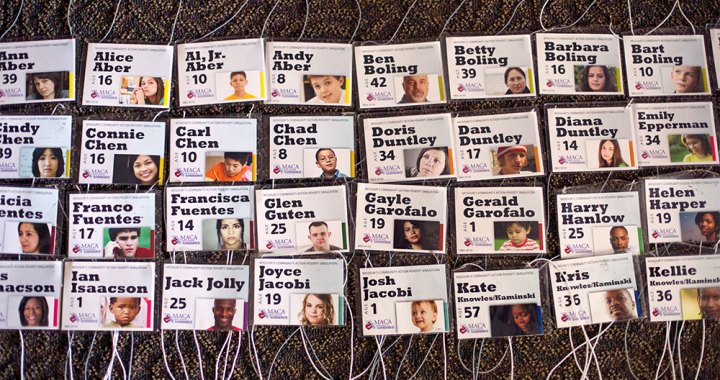Poverty Simulations in Social Work Education
As many of you may already know, simulations are increasingly being incorporated into social work education in various ways (online, in-person, virtual or augmented reality, large-scale, standardized patient, OSCE (Objective structured clinical exams), formative assessment, etc.). In addition, simulations often cover a range of topics such as child welfare home visits, assessment skills, and interprofessional teamwork. The goal of a simulation is to offer students an alternative or mock situation of a real one to meet specific learning outcomes. Reasons for using simulations range from assessing student competency, wanting to offer unique learning experiences to students (i.e., practice assessing for suicidality), and needing to shift instruction to virtual settings (i.e., think moving field hours out of community-based settings).
I have worked on several projects that integrate simulations into our BSW and MSW programs at the University of Alabama at Birmingham (UAB), where I work. One of the most successful has been the use of poverty simulations at our institution. In this blog post, I share why and how we implement poverty simulations, offering guidance for those wanting to add this active learning experience to their curriculum.
#APM16 Day 2 – Learning about Poverty through Interprofessional Simulations
 Today I am presenting a poster with Allyson Varley, PhD Student in the UAB School of Public Health and a research/teaching assistant extraordinaire. Our work focuses on why and how we started implementing poverty simulations with students from diverse majors and professional programs across our campus. Poverty simulations are increasingly common in higher education, offering an innovative modality to increase students’ understanding of poverty. The simulation enables participants to view poverty from different angles in an experiential setting. The poster will cover implementation of poverty simulations and present preliminary findings on the learning outcomes for students. Other member of our working group were not able to join us at #APM16, Drs. Dawn Talyor Peterson, Sallie Shipman, Laura Debiasi and Marjorie Lee White.
Today I am presenting a poster with Allyson Varley, PhD Student in the UAB School of Public Health and a research/teaching assistant extraordinaire. Our work focuses on why and how we started implementing poverty simulations with students from diverse majors and professional programs across our campus. Poverty simulations are increasingly common in higher education, offering an innovative modality to increase students’ understanding of poverty. The simulation enables participants to view poverty from different angles in an experiential setting. The poster will cover implementation of poverty simulations and present preliminary findings on the learning outcomes for students. Other member of our working group were not able to join us at #APM16, Drs. Dawn Talyor Peterson, Sallie Shipman, Laura Debiasi and Marjorie Lee White.
Poverty simulations are increasingly common in higher education, offering an innovative modality to increase students’ understanding of poverty. The simulation enables participants to view poverty from different angles in an experiential setting. The poster will cover implementation of poverty simulations and present preliminary findings on the learning outcomes for students.
#ESCUNO2016 Annual Conference – 10/11/16
This week, I’m attending the 2016 annual conference for the Engaged Scholarship Consortium in Omaha, Nebraska. Yes, returning to the Midwest for a few days! Over the next two days, I’ll be presenting with three colleagues from the University of Alabama at Birmingham, Drs. Erika Rinker, Laura Debiasi and Sallie Shipman.
Today, I will be presenting a poster with Laura and Sallie about our work with poverty simulations at #UAB. If you are at the conference, please join us at the Poster Session in the CenturyLink Ballroom C at 3:30 PM. Our work focuses on why and how we started implementing poverty simulations with students from diverse majors and professional programs across our campus. Poverty simulations are increasingly common in higher education, offering an innovative modality to increase students’ understanding of poverty. The simulation enables participants to view poverty from different angles in an experiential setting. The poster will cover implementation of poverty simulations and present preliminary findings on the learning outcomes for students. Other member of our working group were not able to join us at the Conference, Allyson Varley and Drs. Dawn Talyor Peterson and Marjorie Lee White.



